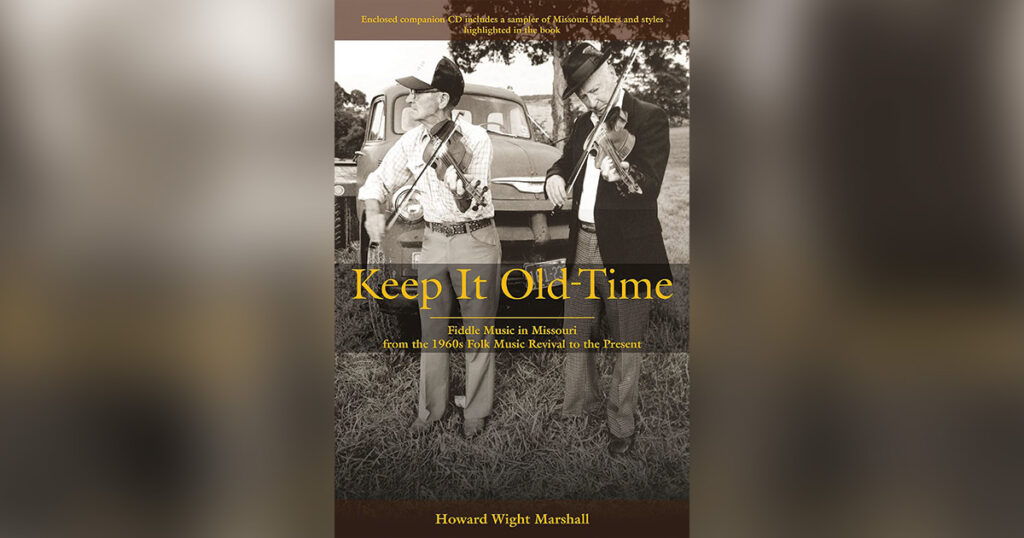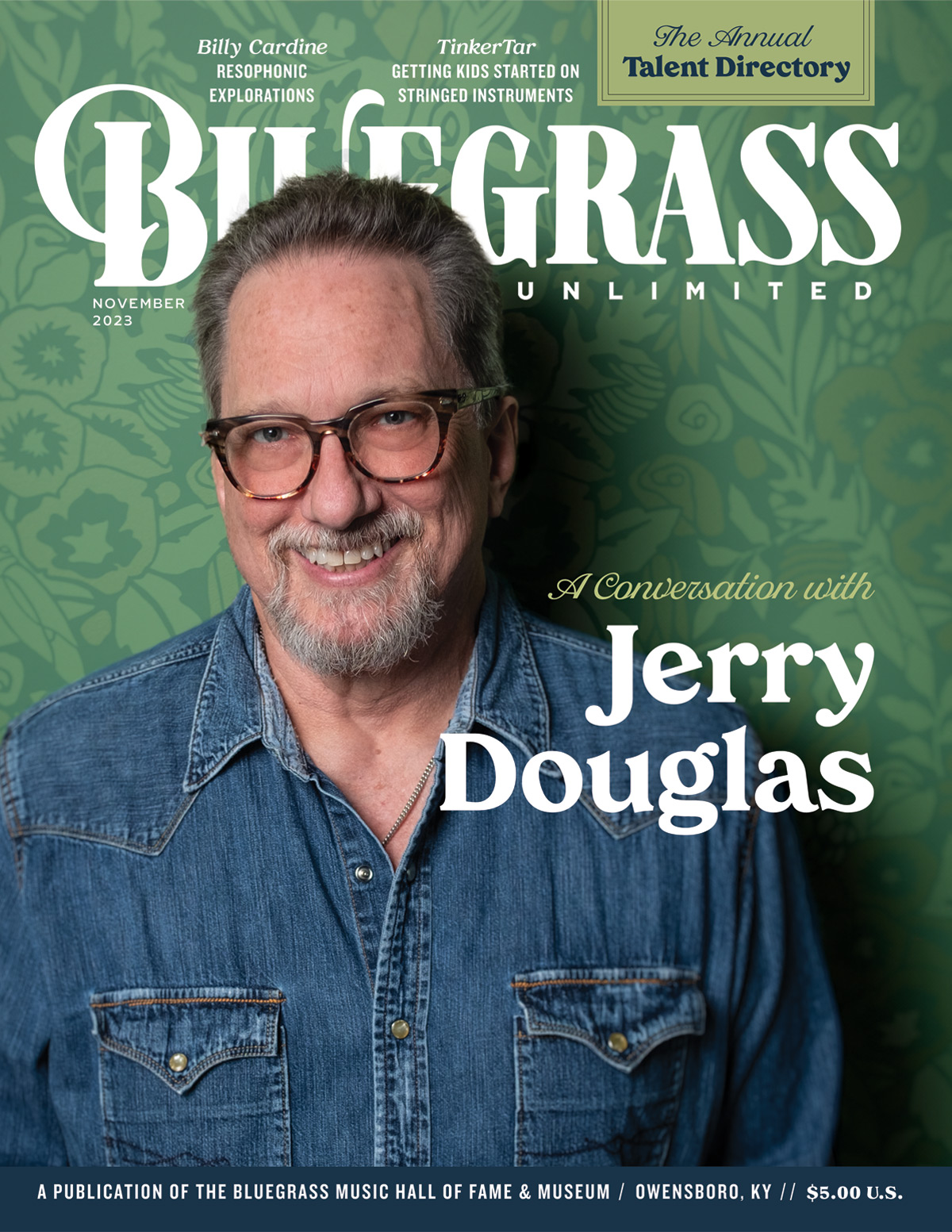Keep It Old-Time—Fiddle Music in Missouri from the 1960s Folk Music Revival to the Present
University of Missouri Press
Howard Wight Marshall, a Professor Emeritus at the University of Missouri, has recently completed his trilogy covering the history of fiddling in the state of Missouri. The first book in the series, titled Play Me Something Quick and Devilish (2013) begins with what is known about fiddling from the time of the early French settlements in the mid-1700s and moves forward in time through the Civil War era and continues through the dawn of jazz. The second book in the series, titled Fiddler’s Dream (2017), explores and documents the heritage of fiddle music in Missouri from the 1920s to the 1960s. This latest volume, published in 2022, continues the story by covering Missouri fiddling from the 1960s through the present day.
Each of Marshall’s three volumes are over 400 pages in length and each comes with an audio CD that highlights many of the fiddlers and tunes presented in each book. With over 1200 pages of information and three audio CDs, Marshall’s trilogy perhaps represents the most complete study of any regional fiddle style, the personalities that made it famous and the culture in which it grew and thrived.
In Keep It Old-Time, in addition to covering aspects of the acoustic music scene in general during the 1960s to the present day (such as the folk music revival in the 1960 and 70s and the fiddle’s role in that revival, the string bands activities in college towns, fiddler’s associations and contests and bluegrass festivals) Marshall covers many of the fiddlers who were prominent in Missouri during the past sixty years. A few of the fiddler’s highlighted in this volume are: Geoff Seitz, R. P. Christenson, John Hartford, Rod Moag, Tom Verdot, Bill Rogers, Jim Ruth, Taylor McBaine, Pete McMahan, Hillis Crowell, Charlie Cook, Cleo Persinger, Dale Pauley, Bill Shull, Charlie Walden, John Griffin, Junior Marriott, Kelly Jones, John Williams, Richard Shewmaker, Trustin Baker, Roger Netherton, Travis Inman, The Stoneking family, Mike Hartgrove, Mona Jones, Rusty Dutton, Gerald Jones, Hannah Farnum, Kathy Summers, Liesl Schoenberger, David Scrivner, Matt Wyatt, and others.
One of the most interesting sections of this new book for bluegrass fans is a chapter covering bluegrass festivals. In this chapter, Marshall discusses the differences between old-time fiddling and bluegrass fiddling and highlights bluegrass fiddlers such as Mike Hartgrove, Mona Jones, Rusty Dutton, and Gerald Jones. In this chapter bluegrass clubs and associations in Missouri are also addressed.
The chapter devoted to fiddle contests in Missouri will be of interest to any fiddler who has participated in a fiddle contest. Here Marshall discusses the fiddlers on the contest circuit who have stayed true to the “Missouri style” of old-time fiddling and those that have embraced the Appalachian style and/or the Texas style of contest playing. Contest fiddlers who are featured in this section of the book include Bill Shull, Charlie Walden, John Griffin, Junior Marriott, Kelly Jones, John Williams, Richard Shewmaker, Trustin Baker, and Roger Netherton. This section also introduces the reader to the Missouri State Old Time Fiddlers Association (MSOTFA).
In the concluding chapter, Marshall addresses how old-time fiddle learning methods have changed over the years with the introduction of methods such as Suzuki, apprenticeship programs, fiddle camps and learning in cyberspace. As in all parts of this book, the topics that are discussed are presented through the telling of the stories of the personalities that pertain to the topic at hand. In this chapter, we learn about fiddle learning methods through sections devoted to the following people—Hannah Farnum, Kathy Summers, Leisl Schoenburger, David Scrivner, Matt Wyatt and Gene Goforth.
In this book, the reader gains a very complete coverage of Missouri fiddling during the past sixty years. As in all of his published material, Marshall is incredibly thorough. He leaves no stone unturned, however, his approach to telling the story of Missouri fiddling through the stories of the people who lived it, make it a very interesting and enjoyable reading experience. Although Marshall has an academic background, his approach does not contain the often dry writing style of some academic authors.
The passion that Marshall shows in telling the story of Missouri fiddling over the past sixty years stems from the fact that he has been an active and avid Missouri fiddler during those years and so he lived what he is writing about and has called the majority of the people he is writing about friends and colleagues. That intimate first-person experience is a valuable asset to this book. His perspective is not based on academic research because the story he tells in this book is as much his own as anyone else he has covered in the book.

